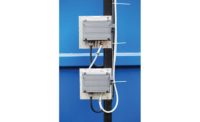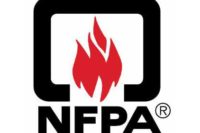The Institute for Electronics and Electrical Engineers’ (IEEE) Industry Applications Society, Electrical Safety Committee held its annual electrical safety workshop (ESW) March 6-11, 2016. The ESW brought together electrical engineers and safety professionals. One of the presentations was on the proposed changes for the 2018 edition of NFPA 70E, Standard for Electrical Safety in the Workplace®.
Article 100, Definitions
NFPA 70E 2018 edition replaces “accident” with “incident” to indicate an unintentional adverse event.
The Article 100 arc flash definition includes the likelihood of occurrence of an arc flash hazard incident increasing when energized electrical conductors or circuit parts are exposed or when they are within equipment in a guarded or enclosed condition — provided a person is interacting with the equipment in such a manner that could cause an electric arc.
The informational note for arc flash hazard is also changed. The likelihood of occurrence of an arc flash incident increases when energized electrical conductors or circuit parts are exposed or when they are within equipment in a guarded or enclosed condition — provided a person is interacting with the equipment in such a manner that could cause an electric arc.
For arc flash boundary, a revised definition: When an arc flash hazard exists, an approach limit from an arc source at which incident energy equals 1.2 cal/cm² (5 J/cm² ). According to the Stoll skin burn injury model, the onset of a second degree burn on unprotected skin is likely to occur at an exposure of 1.2 cal/cm² (5 J/cm² ) for one second.
Revised qualified person definition: a person who has demonstrated skills and knowledge related to the construction and operation of electrical equipment and installations and has received safety training to identify the hazards and reduce the associated risk.
A new definition for Special Purpose Ground Fault Circuit Interrupter (SPGFCI) is a device intended for the protection of personnel that functions to de-energize a circuit or portion thereof within an established period of time when a current to ground exceeds the values established for Class C, D, and E devices.
A definition for working distance is added: The distance between an arc source and the face and chest area of a person.
A modified and expanded informational note for shock hazard is proposed: a source of possible injury or damage to health associated with current through the body caused by contact or approach to energized electrical conductors or circuit parts.
Article 105, Application of Safety‐Related Work Practices
NFPA 70E-2018 recognizes ANSI Z-10 as the basis for “Occupational Health & Safety Management Systems” in the hierarchy of controls. It’s proposed that hazard elimination shall be the first priority in implementation of safety‐related work practices.
Article 110, General Requirements for Electrical Safety Related Work Practices
A comprehensive electrical safety program is a key component of NFPA 70E-2018. The “Electrical Safety Program” in article 110.1 is defined as a documented system consisting of electrical safety principles, policies, procedures and processes that directs activities appropriate for the risk associated with electrical hazards.
The electrical safety program shall include a requirement to assess newly installed or modified electrical equipment or systems prior to normal operation of electrical equipment. The electrical safety program shall include a requirement to investigate electrical incidents.
Other proposed additions cover job safety planning, with a job briefing before starting each job that involves exposure to electrical hazards. Auditing includes: (1) Electrical Safety Program audit; (2) field work audit; and (3) lockout/lagout program and procedure audit.
110.2 Training requirements
Added to 70E is lockout/tagout procedure training: Employees that could be involved in or affected by the lockout/tagout procedures shall be trained in: (1) The lockout/tagout procedures; and (2) their responsibility in the execution of the procedures. Retraining in the lockout/tagout procedures shall be: (1) When the procedures are revised; (2) At intervals not to exceed 3 years; and (3) When supervision or annual inspections indicate that the employee is not complying with the lockout/tagout procedures.
For first aid and emergency response training: Employees responsible for the safe release of victims from contact with energized electrical conductors or circuit parts shall be trained in methods of safe release. Refresher training shall occur annually. Employees exposed to shock hazards shall be trained in methods of safe release of victims from contact with exposed energized electrical conductors or circuit parts. AED/CPR refresher training shall occur at a frequency that satisfies the requirements of the certifying body.
Article 120, Establishing an Electrically Safe Work Condition
The employer shall be responsible for: (1) Providing the equipment necessary to execute lockout/tagout procedures; (2) Providing lockout/tagout training to workers; (3) Auditing the lockout/tagout program; and (4) Auditing execution of the lockout/tagout procedures.
Article 130, Work Involving Electrical Hazards
130.2, Electrically Safe Work Conditions: Energized electrical conductors and circuit parts operating at voltages equal to or greater than 50 Vac or 100 Vdc shall be put into an electrically safe work condition (with few exceptions) before work begins. When energized work is performed as permitted, an energized electrical work permit shall be required and documented.
130.4, Shock Risk Assessment
Two separate types of risk assessments are needed for an electrical safety program: shock and arc flash risk assessments. The risk assessment is dependent an overall process that identifies hazards, estimates the likelihood of occurrence of injury or damage to health, potential severity and determines if protective measures are required. Shock risk assessment shall be performed as follows: (1) identify shock hazards; (2) estimate the likelihood of occurrence of injury or damage to health and the potential severity of injury or damage to health; (3) determine if additional protective measures are required, including the use of PPE.
Article 130.5, Arc Flash Risk Assessment
An arc flash risk assessment shall be performed as follows: a) identify arc flash hazards; b) estimate the likelihood of occurrence and the potential severity of injury or damage to health; c) determine if additional protective measures are required, including the use of PPE.
Article 130.7, Personal and Other Protective Equipment
A significant proposed addition to NFPA 70E was “conformity assessment” for testing and certifying protective systems, clothing and equipment. NFPA 70E-2018 proposed additions for personal protective conformity assessment are available on the e-Hazard website.
Proposed personal protective and other protective equipment changes are: heavy duty leather footwear or dielectric footwear or both provide some arc flash protection to the feet and shall be used in all exposures greater than 4 cal/cm².
1 Available at http://www.e-hazard.com/blog/flashcert-announces-new-proposed-nfpa-70e-language-changes-in-2018/.



